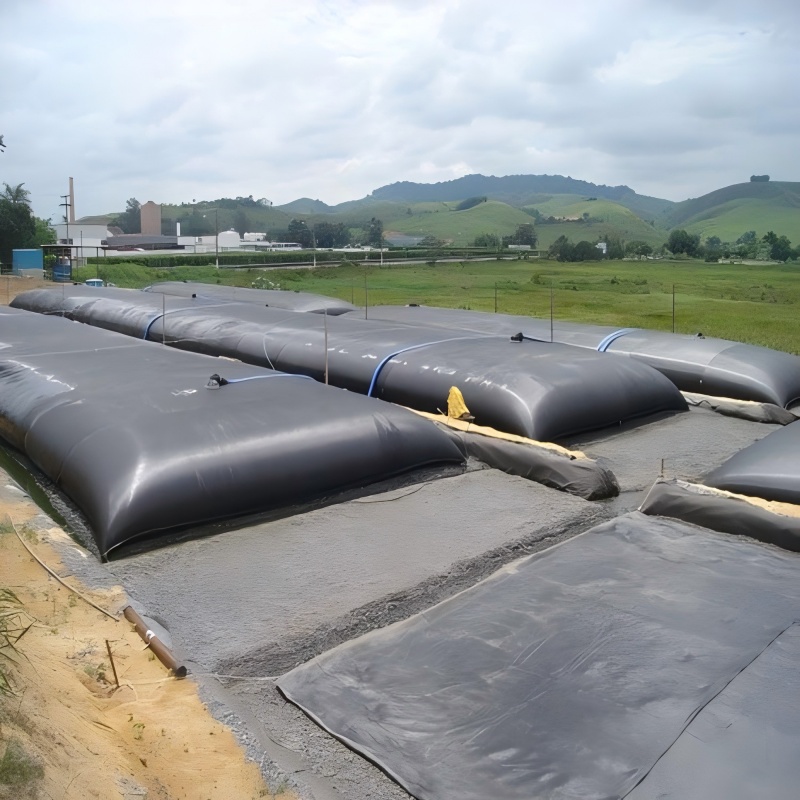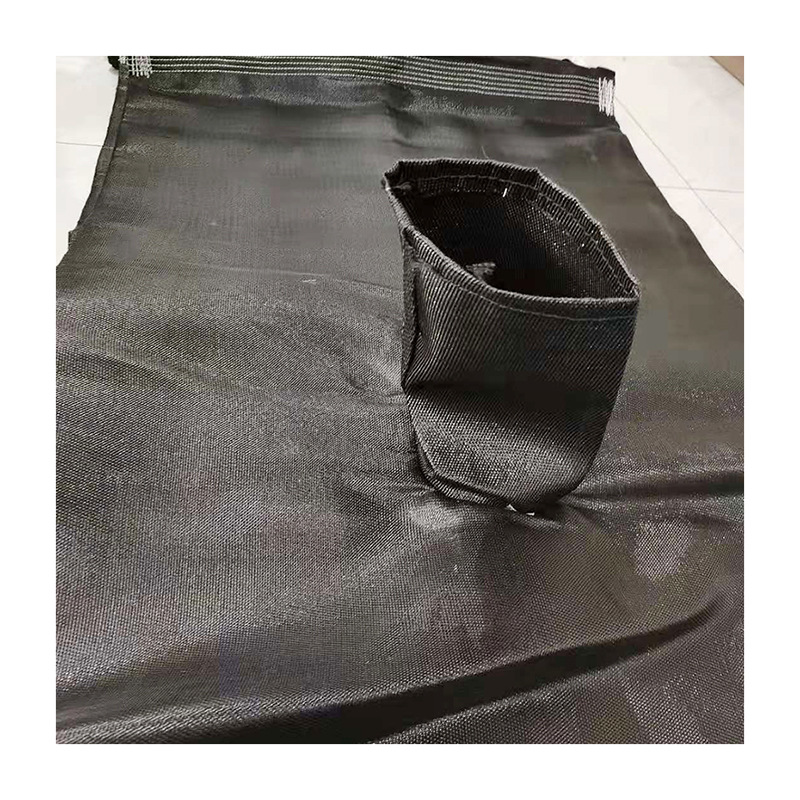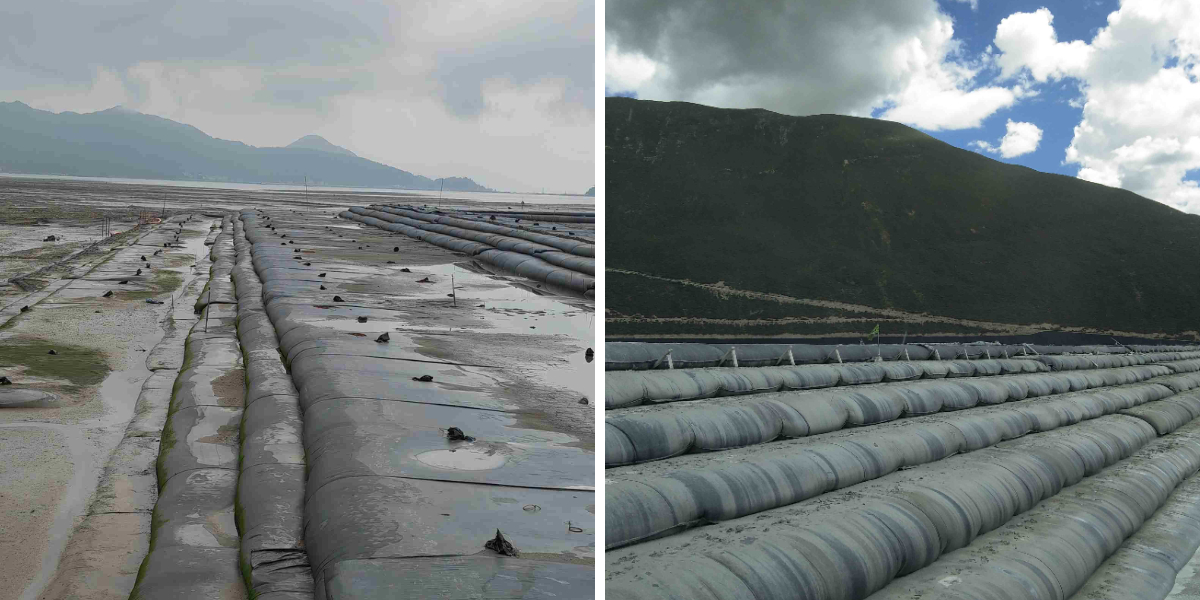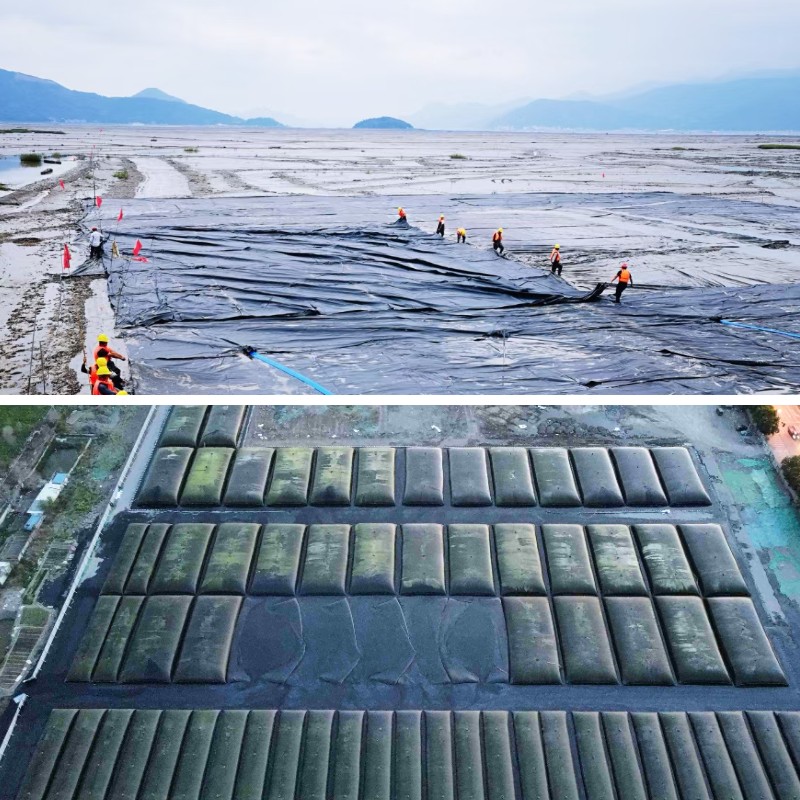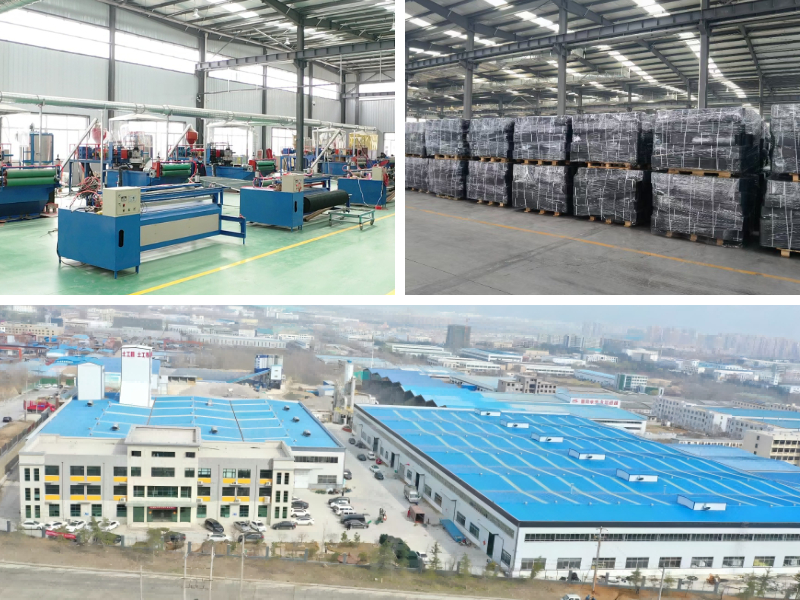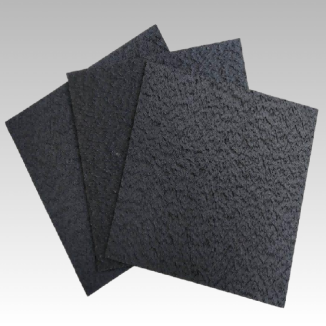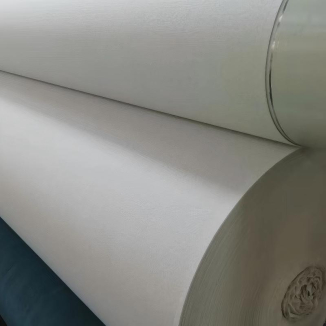Erosion Control Sediment Tubes
1. Fast construction speed: Using hydraulic filling with a high degree of mechanization can shorten the construction period.
2. Low cost: Using local silt or sand for construction can reduce the transportation of soil or sand and save costs.
3. Simple process: No need for complex mechanical equipment, low construction difficulty.
4. Ecological and environmental protection: The construction area is small and can be used for river, lake, and sea sludge treatment, municipal sludge treatment, etc., which is conducive to protecting the environment
Product Introduction:
Erosion Control Sediment Tubes are large bag like structure made of high-strength geotextile fabric (usually woven or composite of synthetic fibers such as polypropylene and polyester) processed through professional sewing technology, with the triple functions of "filtration, bearing, and consolidation":
1. Basic material: Geotextiles that are resistant to acid and alkali, UV rays, and biological erosion are used to ensure long-term stability in harsh environments such as underwater, high salt, and pollution;
2. Structural form: Conventional diameter of 1-6 meters, length of 50-150 meters (can be customized according to engineering requirements), with dedicated filter holes on the surface or inside of the bag body, and some tube bags will have built-in reinforcement ribs or partition layers to enhance tensile and deformation resistance;
3. Core function: Fill the bag with silt, sand, gravel, sludge and other materials through hydraulic or mechanical means, use the "filtering" property of geotextiles to discharge excess water, quickly dehydrate and solidify the materials inside the bag, and ultimately form a "solid structure" with certain strength and stability, which is used to replace traditional soil and rock materials.
Key Features
The advantages of geotextile bags stem from the combination of their material properties and process design, which can be divided into the following six points:
1. Efficient dehydration consolidation
Principle: When the material inside the bag is subjected to its own gravity or external pressure, water is discharged through the micropores of the geotextile (the filter aperture is usually 0.05-0.2mm, allowing only water to pass through and intercepting solid particles);
2. High strength and durability
Mechanical properties: The tensile strength of geotextile can reach 10-30kN/m (transverse/longitudinal), the tear resistance strength is ≥ 5kN, and it can withstand the impact pressure during the filling process (maximum filling pressure can reach 0.2MPa) and long-term water pressure and wave force;
Environmental adaptability: resistant to seawater corrosion (no obvious aging after 5000 hours of salt spray test), resistant to ultraviolet radiation (strength retention rate ≥ 80% after 5 years of outdoor exposure), resistant to biological attachment (material does not provide microbial growth nutrients), suitable for complex environments such as oceans, lakes, and polluted sites.
3. Convenient and efficient construction
High degree of mechanization: mainly using "pipeline hydraulic filling" (with mud pumps and mixing plants), a single set of equipment can fill 1000-3000m ³ of material per day, which is 3-5 times more efficient than traditional soil and rock embankment construction;
Short construction period: Taking the sea reclamation project as an example, the main construction of a 1-kilometer-long and 3-meter-high geotextile bag dam can be completed in only 15-20 days;
Strong adaptability to the site: No large excavation equipment is required, and operations can be carried out in areas that are difficult to reach for conventional construction such as shallow waters, swamps, and underwater. The minimum operating water depth can be as low as 0.5 meters.
4. Outstanding cost-effectiveness
Low material cost: The "waste" such as silt, dredged soil, and tailings on the construction site can be directly used as filling materials, reducing the transportation cost of purchased soil and rock (saving 50% -70% of soil and rock transportation costs per kilometer of embankment);
Low labor and equipment costs: The construction team only requires 5-8 people (including operation and monitoring), equipment investment is one-third of traditional processes, and there is no need for post maintenance (stable structure after consolidation, no risk of collapse).
5. Ecological and environmental characteristics
Reduce pollution diffusion: When treating polluted sludge, geotextile bags can intercept heavy metals, organic matter and other pollutants (filter aperture prevents pollutant particle leakage), and the wastewater generated during the dehydration process can be collected and treated centrally to avoid secondary pollution;
Protecting the ecological environment: Compared to traditional land reclamation methods such as "mountain excavation and quarrying", geotextile bags utilize dredged silt to reduce damage to land vegetation and marine ecology. In some projects, aquatic plants can also be planted on the surface of the bags to construct artificial wetland ecosystems.
6. Strong structural flexibility
Customized design: The diameter, length, filtering aperture, and reinforcement density of the pipe bag can be adjusted according to engineering requirements. For example, in marine engineering, the bag body needs to be thickened (fabric thickness ≥ 2mm) and an anti wave layer added. Small pipe bags (diameter 1-2 meters) can be stacked for river management;
Combination application: Multiple pipe bags can be spliced and stacked to form complex structures such as dams, cofferdams, and roadbeds. For example, in land reclamation, the bottom layer of pipe bags is first laid to form the foundation, and then the upper layer of pipe bags is stacked to raise the height, with the top covered with geomembrane for anti-seepage.
Product Parameters:
project | unit | CWGD50S | CWGD90/120 | CWGD90S | CWGD100S | CWGD120S-B | CWGD120S-C | CWGD130S | CWGD200S-C | |
Tensile strength-radial | kN/m | 55 | 90 | 90 | 100 | 130 | 130 | 130 | 220 | |
Tensile strength-Weft | 50 | 120 | 90 | 100 | 120 | 120 | 130 | 210 | ||
Strain elongation-radial | % | 16±1 | 12±1 | 9±1 | 10±1 | 10±1 | 10±1 | 10±1 | 12±1 | |
Extensional elongation-Weft | 10±1 | 8±1 | 8±1 | 8±1 | 8±1 | 8±1 | 8±1 | 8±1 | ||
Breakage strength at 2% elongation | warp direction | kN/m | 5/15 | 14/40 | 30/30 | 30/30 | 20/40 | 22/40 | 20/45 | 15 |
Breakage strength at 5% elongation | warp direction | kN/m | 14/33 | 38/90 | 75/75 | 75/75 | 80/100 | 84/40 | 80/110 | 90 |
mass area ratio | g/m² | 285 | 440 | 390 | 430 | 540 | 540 | 560 | 850 | |
Joint tensile strength | kN/m | 35 | 90 | 60 | 70 | 100 | 100 | 110 | 170 | |
Static Burst Strength (CBR) | KN | 5 | 10 | 10 | 13 | 15 | 15 | 16 | 22 | |
Dynamic perforation | mm | 10 | 8 | 12 | 12 | 10 | 10 | 11 | 8 | |
Equivalent aperture (0g0) | mm | 0.9 | 0.48 | 0.52 | 0.45 | 0.4 | 0.3 | 0.43 | 0.4 | |
Permeability (Q50) | L/m²/s | 200 | 40 | 20 | 15 | 12 | 6.5 | 15 | 15 | |
Ultraviolet resistance (500h strong storage rate ) | % | 90 | 90 | 85 | 85 | 85 | 85 | 85 | 85 | |
Product Applications:
1. Water conservancy and port engineering (traditional field):
Embankment and seawall construction: used as core structures or revetments.
Construction of artificial islands and reefs: filling and forming land areas.
Cofferdam engineering: used for temporary water blocking or forming construction areas.
Reclamation of mudflat: promoting siltation and land reclamation.
2. Dredging and dredging engineering (core application):
Dredging of rivers, lakes, and ports: The dredged silt is directly filled into pipe bags, dehydrated and solidified on-site or off-site, avoiding large-scale transportation and stacking problems.
3. Environmental Engineering and Sludge Treatment:
Industrial sludge treatment: treating desulfurization gypsum from power plants, paper mill sludge, metallurgical slag, etc.
Wastewater treatment plant sludge: Dehydration and reduction treatment of municipal sludge.
Polluted sediment treatment: Closed dewatering treatment is carried out on the polluted riverbed and lake bottom sludge to immobilize pollutants and facilitate subsequent safe disposal.
Agricultural waste treatment: treating livestock and poultry breeding wastewater, biogas digester residue, etc.
4. Mining engineering:
Tailings treatment: replacing traditional tailings ponds for dewatering and storage of mine tailings, safer and more environmentally friendly.
5. Disaster emergency response and ecological restoration:
Flood control and emergency rescue: Quickly stack to form temporary flood control embankments.
Soil and Water Conservation: Used for stabilizing soil and protecting slopes or beaches with severe erosion.
Geotube bag is an innovative and multifunctional material for geotechnical and environmental engineering, which cleverly integrates the three functions of "separation", "dehydration", and "structure formation". Due to its economic, efficient, and environmentally friendly characteristics, it has been increasingly widely used in fields such as dredging, sludge treatment, coastal protection, and mine restoration worldwide, and is an excellent example of modern engineering technology solving traditional problems.



